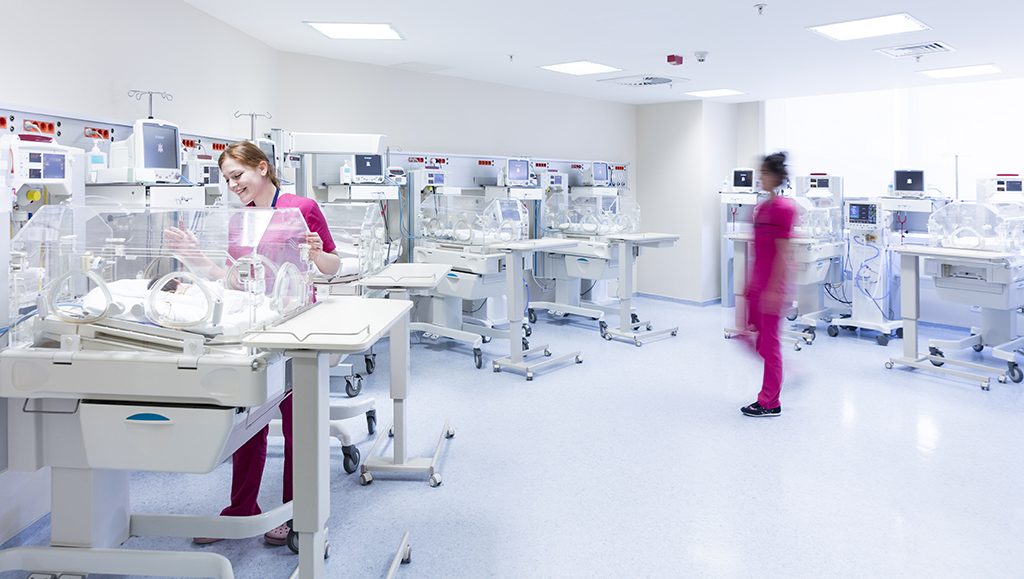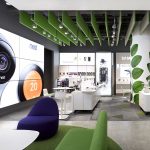How Does Tunable White Lighting Improve Patient Outcomes in Health Care?

Picture this: You’re sick at the doctor’s office, in dire need of something to make you feel better—fast.
But instead of giving you a prescription for medicine at the pharmacy, the doctor prescribes light.
Yes, light.
Increasing a patient’s exposure to light is fast becoming an effective, go-to therapy tool thanks to record advancements in LED lights and lighting controls.
In fact, doctors, nurses and physicians are using tunable white lighting technology to address several therapeutic conditions only medications and specialized therapy could previously remedy.
The question is what makes tunable white lighting so effective in so many health care treatments?
How light controls our bodies
Many of our daily patterns and biological cycles, like when we wake up and get sleepy, are controlled by our body’s circadian rhythm, which in turn is controlled by the lightness and darkness of our immediate surroundings. That’s why sunlight plays the largest factor: Its blue light spectrum suppresses melatonin, the hormone that controls our sleep-wake cycles.
This light-activated cycle is called “entrainment.”
Before, artificial interior light could not mirror outdoor natural sunlight or the innate body clock and functions it controls including mental alertness, mood, hunger and other key health functions. It was difficult, if not impossible, to create more natural light exposure indoors.
Fueled by advancements in LED technology and lighting controls, called tunable white lighting, we now can.
What is tunable white lighting?
Tunable white lighting is light that complements our natural circadian rhythms and mimics the sun.
The technology adjusts to our daily rhythms by automatically changing the intensity and color temperature of a room, space or building’s interior light throughout the day.
Cool-toned light emitting from a tunable white lighting system, especially at high intensity, suppresses melatonin, stimulates alertness and improves cognitive function.
Warm-toned light, on the other hand, encourages melatonin secretion and helps us relax. Exposure to amber light before bed can be very helpful in getting a good night’s sleep.
For the past century, lighting from fixtures and device screens alike has significantly impacted our circadian rhythms. It has liberated us from having to live by the sun. Now, it’s helping us improve health care patient outcomes.
How tunable lightning helps patients
At present, lighting in most hospitals, rehab facilities and nursing homes focus on general illumination.
Important visual functions—like seeing what you’re doing and where you’re going without tripping—were the primary reasons why lighting was installed.
But improved lighting systems can now be therapeutic for patients.
Studies and research show that installing tunable lighting at an institution has provided the following benefits for adults of all ages:
- A sharp reduction in dementia behaviors
- Significantly fewer patient falls, especially among those who are elderly
- Better circadian entrainment
- Improved sleep and overall health
- More calmness
- Less need for psychotropic and sleep medication
Research has also shown that premature babies sustained the following benefits from tunable white lightning systems:
- More time sleeping, during their stay and after discharge
- Better weight gain, during their stay and after discharge
- Can be fed orally sooner
- Enhanced motor coordination
- Fussed and cried less
Where to install tunable lighting applications in health care
Any space where patients, visitors and caregivers spend large chunks of time would benefit from a tunable lighting system installation.
Primary focus areas for such lighting should include:
- Patient rooms
- Hallways
- Neonatal intensive care units (NICU)
- Post-acute care units (PACU)
Here’s why: While most patient rooms in hospitals and long-term care facilities have windows, beds are sometimes not close enough to the windows to receive the necessary full circadian effect.
In rooms with more than one bed, the patient in the farther bed (oftentimes separated from the window by a pull curtain) receives even less light.
Hallways—most of which have few, if any windows—get even less light despite being a high traffic foot area for patients.
And premature newborns in NICUs and PACUs can use tunable lighting systems to help set their internal clocks and increase their recovery times by receiving more of the health benefits such a system can provide.
Other areas that could benefit from tunable white lighting include lobbies, cafes, emergency departments and visitor lounges.

